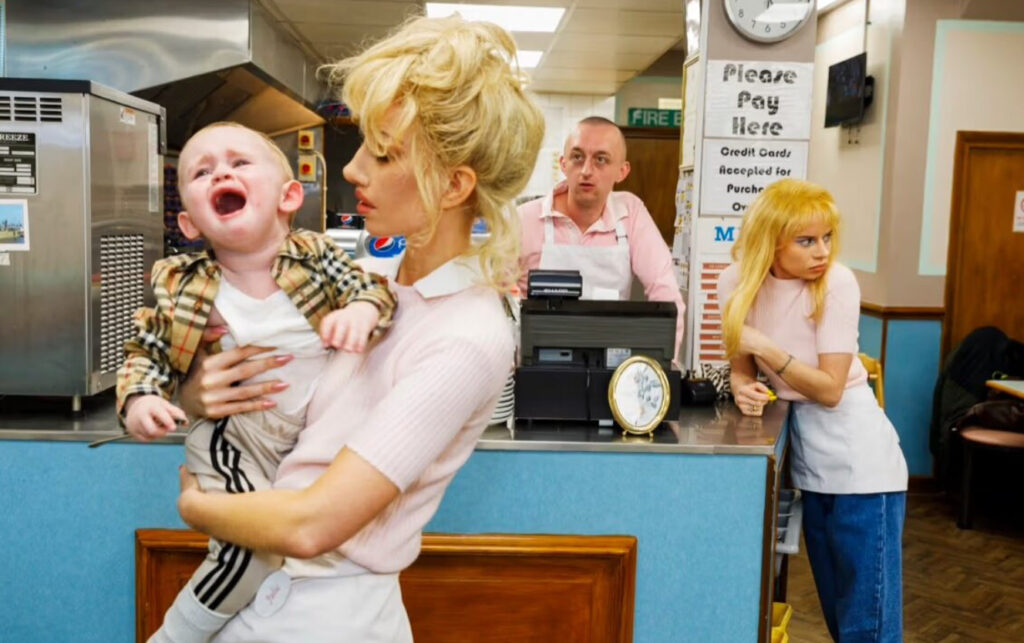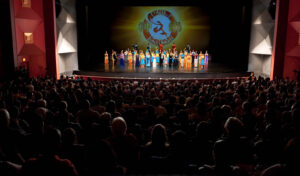
The marble neoclassical courtyard of Somerset House gleams this May with more than the promise of spring—it radiates the visual momentum of Photo London, now celebrating its tenth anniversary as the UK’s premier international photography fair. Simultaneously commemorating 25 years of its host venue’s renaissance as a creative hub, the 2025 edition of Photo London opens its grandest chapter yet: 131 exhibitors, over 400 artists, and a city-wide celebration of photographic vision. From the lens of conflict to intimate youth portraits, from raw documentary to refined abstraction, the fair positions photography not merely as medium, but as a method of seeing the world as it is—and as it might be.
A show of this scale is more than just an art fair. It’s a cultural archive in motion. An atlas of perspectives. A temporary city within a city, where conversations unfold not through slogans or soundbites, but in frames, shadows, and shutter speeds. In its tenth year, Photo London proves it is no longer an upstart celebration of the photographic arts but a major axis of critical image-making—a space where collectors, curators, gallerists, and artists convene to reflect on the global psyche through the visual.
London Lives: A City Reflected
The anniversary exhibition London Lives anchors the fair with clarity of place and purpose. An ode to both the city and the fair’s first decade, this sprawling section pays homage to the artists who have captured, challenged, and redefined London’s visual identity. The city’s multiplicity—its melancholy and its vibrancy, its grit and its glamour—emerges in works that span generations and genres. From historic documentation of social movements to intimate portraits of borough life, London Lives functions less as a retrospective and more as a living archive.
This is not a sanitized tourism portrait. It is London as lived—through uprisings and gentrification, migration and myth, grime and grace. It’s a recognition that photography here is never neutral; it always refracts power, identity, and place. The works resonate because they are grounded in the tension between belonging and displacement, between memory and immediacy. They do not flatter. They confront.
And in doing so, they reinforce the fair’s own embeddedness in the city. Photo London, like London itself, is global by necessity and local by design.
Discovery: Urgency Meets Aesthetic
Curated by journalist and critic Charlotte Jansen, the Discovery section explodes with vitality and confrontation. Designed to spotlight emerging voices, Discovery positions itself as both barometer and beacon—a measure of where we are and a guide to where photography is going. Jansen has assembled a group of artists unafraid to push the boundaries of documentary truth and personal expression. The works here are not polished commodities. They are urgent, at times uncomfortable, and politically engaged.
Global conflict, displacement, ecological grief, and gender transformation appear not as abstract topics, but embodied realities. These are not works about issues; they are visual testimonies from within them. There’s an unshakable gravity to this section—one that insists photography must do more than decorate or document. It must witness.
Jansen’s curation reflects an evolving recognition in the art world: that to remain relevant, fairs must provide space not only for market-ready art but for experimentation, activism, and artistic risk.
Positions: The Unrepresented, Revealed
A notable debut in this year’s edition is Positions, a new platform offering unrepresented artists the opportunity to exhibit in a format traditionally dominated by commercial galleries. The inclusion of Positions is a powerful gesture, affirming Photo London’s growing commitment to equity and visibility in the photographic arts.
Here, the fair’s democratizing impulse shines. These are photographers without dealers or institutional support, many exhibiting in a professional art context for the first time. Yet the work is as conceptually rich and technically refined as anything from established names. Indeed, it is this section that perhaps best captures photography’s role as an accessible medium—one that, in its most honest form, doesn’t require privilege to be powerful.
From quiet domestic vignettes to bold geopolitical narratives, Positions offers a kind of visual insurgency: talent without gatekeepers. And it hints at a hopeful future for art fairs—one in which merit, not market saturation, determines visibility.
Lola & Pani: Nostalgia Without Sentimentality
Among the standout presences in Discovery is London’s own Palm Studios, founded by Polish-born photographer Lola Paprocka. At its booth, Palm presents three deeply evocative images from Bumps, a 2024 photobook created by Paprocka and her creative partner Pani Paul. The duo—Poland meets Byron Bay—spans hemispheres and histories, yet together they have crafted a visual diary of adolescence that resonates globally.
Shot over ten years across various countries, Bumps is a meditation on youth as both a state and a mythology. There are no posed portraits or Instagram gloss. Instead, we see skate parks and half-lit bedrooms, uncertain glances and sunburned limbs. It’s rough, tender, awkward, and universal. The genius of Lola & Pani lies in their ability to photograph adolescence not as memory, but as myth-in-progress. Their work is nostalgic, yes—but never sentimental.
The images anchor you in time while making it feel suspended. Bumps is adolescence caught mid-sentence.
The Photographic Landscape, Reconsidered
Across all sections, Photo London 2025 poses the implicit question: what is photography today? As technologies evolve and AI-generated images blur the boundaries of truth, photography’s power lies less in “showing the real” and more in revealing what the real feels like. The works at this fair capture this paradigm shift.
There’s a formal flexibility on display—from hand-tinted prints to mixed-media compositions, from traditional black-and-white portraiture to 3D installations. At times, photography dissolves into sculpture. Elsewhere, it becomes sound, or moving image. The fair resists ossification. It celebrates photography’s hybrid nature—its ability to mutate across disciplines while retaining its capacity for storytelling.
And that storytelling is diverse in every sense. Artists of color, queer photographers, diasporic voices, and global South perspectives are no longer exceptions. They are becoming the rule. Not by box-ticking, but by their undeniable relevance and artistic brilliance.
Somerset House: More Than a Venue
That all of this unfolds within Somerset House is no minor detail. The cultural powerhouse has become a symbolic and logistical engine for the arts in London. Celebrating 25 years since its reinvention as an arts center, Somerset House remains both stately and subversive—a historic building unafraid of hosting radical ideas.
Its architecture provides visual dialogue with the work: classic arches framing postmodern perspectives. In its rooms, the juxtaposition between centuries-old plasterwork and freshly printed photojournalism fosters a sense of time collapse—reminding visitors that while technologies change, the need to see, and be seen, endures.
There’s also something deeply fitting about hosting a photography fair in a space once synonymous with empire and administration. The photographic medium, itself born of colonial mechanisms of seeing, is now used here to dismantle those very narratives. The space is reclaimed, lens by lens.
Publishing Power: The Book as Exhibition
Beyond prints and gallery walls, this year’s fair places notable emphasis on the photobook. Several booths are devoted exclusively to photography publishing, including Steidl, MACK, and Palm, emphasizing the enduring power of the book as a medium of distribution and intimacy.
In a time when scrolling has replaced page-turning, photobooks still offer a unique temporal experience. They are narrative forms. They require slowness, patience, and physical presence. Unlike exhibitions that are ephemeral, books persist. They pass from hand to hand. They collect fingerprints. They tell stories that outlast the fair.
Photo London understands this. The photobook here is not ancillary. It’s central.
The Market and the Message
Inevitably, Photo London is also a commercial affair. Collectors roam the halls. Prices are whispered. Sales are made. But unlike some international art fairs where commerce overshadows content, Photo London 2025 maintains a careful balance. The work still feels primary. The messaging still carries weight.
There’s commercial viability in sincerity. Galleries seem increasingly attuned to the fact that collectors want more than beautiful images—they want meaningful ones. They want artists who are rooted in community, in struggle, in craft. And that demand has transformed the fair into a place where values and value intersect.
Through the Lens, a Wider World
In its tenth year, Photo London has come of age. What began as a hopeful gathering of photographic voices has grown into a defining event on the global cultural calendar. And yet it retains the urgency of something younger. It does not rest on laurels. It invites critique. It makes space. It listens.
As visitors wander the halls of Somerset House—pausing at portraits of war survivors, youth skaters, abandoned spaces, intimate glances—they’re reminded of what photography can do. It doesn’t solve the world’s problems. But it shows them. And sometimes that’s the beginning of change.
Through silver gelatin and digital pigment, archival ink and chemical light, Photo London 2025 builds a temporary republic of sight. It is fleeting, yes—but in its ephemerality lies its force. Because for a few days in May, in the heart of a complicated city, the world gathers not just to look—but to witness.
No comments yet.









